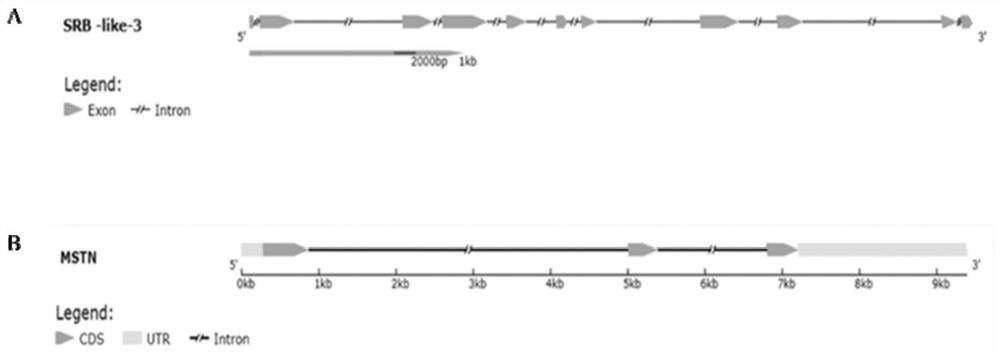Gene editing method for electrotransfected bivalve mollusks
A gene editing, bivalve mollusk technology, applied in genetic engineering, biochemical equipment and methods, cells modified by introducing foreign genetic material, etc., can solve problems such as difficult application of shellfish gene editing, achieve low cost, equipment Simple requirements and promising results
- Summary
- Abstract
- Description
- Claims
- Application Information
AI Technical Summary
Problems solved by technology
Method used
Image
Examples
Embodiment 1
[0047] Taking Chlamys sinensis as an example, the experiment of electrotransfection bivalve gene editing was carried out.
[0048] Time: October 2020
[0049] In October 2020, male and female individuals of the golden strain with full gonads were selected from the 8-month-old luxurious scallops cultured in the waters of Nan'ao Island, Shantou City, Guangdong Province; the specific steps are as follows:
[0050] 1. Target gene structure analysis.
[0051] According to the published transcriptome information and unpublished genome information of our research group, we jointly analyzed the gene sequence, and it was confirmed that the gene SRB-like-3 related to carotenoid accumulation has 10 intron regions and 11 exon regions (Such as figure 1 Shown in A), wherein the exon overlaps with the CDS sequence; the myostatin gene MSTN has 2 intron regions and 3 exons in total, of which the No. 3 exon is slightly larger than the CDS region (such as figure 1 shown in B).
[0052] 2. Acco...
Embodiment 2
[0060] Taking Chlamys sinensis as an example, the experiment of electrotransfection bivalve gene editing was carried out.
[0061] Time: April 2021
[0062] In April 2021, from the 8-month-old luxurious scallops cultured in the waters of Nan'ao Island, Shantou City, Guangdong Province, select male and female individuals of the golden strain with full gonads; the specific steps are as follows
[0063] 1. Construction of recombinant plasmids. The sgRNA was designed and synthesized according to Example 1, annealed to form a double strand, and ligated with the pSpCas9(BB)-2A-GFP(PX458) plasmid linearized by BbsI digestion. The schematic diagram of the structure is as follows Figure 6 .
[0064] 2. The steps for obtaining fertilized eggs are the same as in Example 1.
[0065] 3. Electrotransfection operation: Keep the recombinant plasmid concentration ≥ 2 μg / μl, add it to high-density fertilized eggs and mix well, set the electric shock parameters at 250V, 400μs, and transfer 8...
PUM
 Login to View More
Login to View More Abstract
Description
Claims
Application Information
 Login to View More
Login to View More - R&D
- Intellectual Property
- Life Sciences
- Materials
- Tech Scout
- Unparalleled Data Quality
- Higher Quality Content
- 60% Fewer Hallucinations
Browse by: Latest US Patents, China's latest patents, Technical Efficacy Thesaurus, Application Domain, Technology Topic, Popular Technical Reports.
© 2025 PatSnap. All rights reserved.Legal|Privacy policy|Modern Slavery Act Transparency Statement|Sitemap|About US| Contact US: help@patsnap.com



